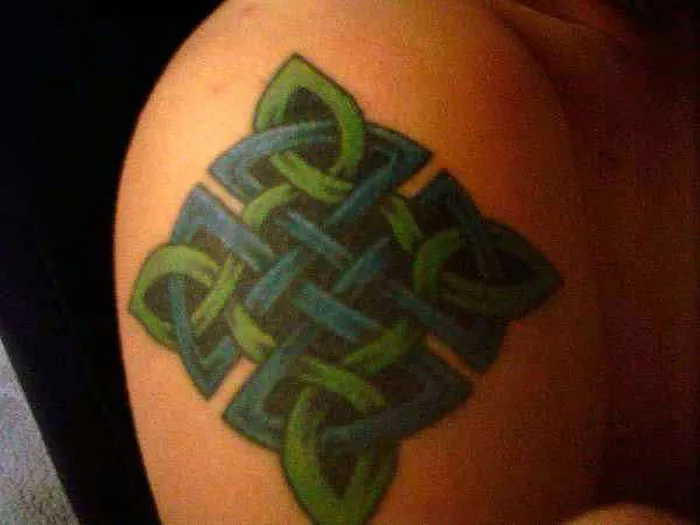Tattoos have been a part of human culture for millennia, serving as symbols of identity, expression, and artistry. Among the myriad of tattoo styles, Celtic tattoos hold a special place, characterized by intricate knotwork, spirals, and other distinctive motifs inspired by Celtic culture and heritage. However, as personal preferences change or life circumstances evolve, individuals may find themselves seeking options for tattoo removal, including those adorned with intricate Celtic designs.
Understanding Celtic Tattoos
Before delving into the removal process, it’s essential to appreciate the significance and appeal of Celtic tattoos. Originating from the ancient Celts, who inhabited areas of Europe over 2,000 years ago, Celtic art is renowned for its complexity and symbolism. Celtic tattoos often feature interlocking patterns, animals, and symbols such as the triquetra or triskelion, each carrying its own meaning and history.
These tattoos are deeply rooted in Celtic mythology, spirituality, and cultural heritage. They can represent concepts like strength, unity, and the interconnectedness of all things. For individuals with Celtic ancestry or a fascination with Celtic culture, these tattoos serve as powerful expressions of identity and pride.
The Decision to Remove
Despite the meaningful symbolism behind Celtic tattoos, there are instances where individuals may contemplate their removal. Changes in personal beliefs, career considerations, or dissatisfaction with the tattoo’s appearance are common reasons for seeking removal. Unlike the relatively straightforward process of getting inked, removing a tattoo requires careful consideration and understanding of available options.
Methods of Removal
Several methods exist for removing tattoos, each with its own advantages, drawbacks, and considerations. These methods range from non-invasive to surgical, and the choice depends on factors such as tattoo size, ink colors, skin type, and desired results.
1. Laser Tattoo Removal:
Laser tattoo removal is the most common and effective method for eliminating tattoos, including those with intricate Celtic designs. It works by directing pulses of high-intensity laser light onto the tattooed area, breaking down the ink particles into smaller fragments that the body can naturally remove. Multiple sessions are usually required to achieve satisfactory results, with the number varying based on factors like tattoo size, ink colors, and skin tone.Laser technology has advanced significantly in recent years, allowing for greater precision and reduced risk of scarring. However, complete tattoo removal may not always be possible, especially for tattoos with dense black ink or certain colors like green or blue. Additionally, laser tattoo removal can be painful and may cause temporary side effects such as redness, swelling, or blistering.
2. Intense Pulsed Light (IPL) Therapy:
Similar to laser treatment, IPL therapy utilizes high-intensity light to target and break down tattoo ink. While less commonly used than lasers for tattoo removal, IPL may be suitable for certain ink colors and skin types. However, its effectiveness can vary, and multiple sessions are typically required for significant fading.
3. Surgical Excision:
In cases where laser removal is not feasible or desired, surgical excision offers an alternative approach. This method involves cutting out the tattooed skin tissue and stitching the surrounding skin back together. Surgical excision is most suitable for smaller tattoos and may result in scarring, making it less ideal for intricate Celtic designs.
4. Dermabrasion:
Dermabrasion involves mechanically sanding down the outer layers of skin to remove tattoo ink. While effective for some tattoos, it can be painful and may cause bleeding, infection, or scarring. Dermabrasion is less commonly used today due to the availability of more advanced removal techniques.
5. Chemical Peels:
Chemical peels involve applying acid solutions to the skin to remove the top layers, including tattoo ink. While relatively inexpensive compared to other methods, chemical peels are less effective for deep tattoos and may cause skin irritation or pigmentation changes.
Considerations for Celtic Tattoos
When considering tattoo removal, individuals with Celtic tattoos should take several factors into account:
1. Intricacy of Design: Celtic tattoos often feature complex knotwork and patterns that may require multiple sessions of laser treatment for complete removal. Patience and realistic expectations are essential, as complete removal may not always be achievable.
2. Ink Colors: Certain ink colors, such as black or dark green, respond better to laser treatment than others. Individuals with Celtic tattoos featuring a variety of colors may require specialized lasers or additional sessions for optimal results.
3. Skin Tone: Laser tattoo removal tends to be more effective on lighter skin tones, as darker skin may absorb more laser energy, increasing the risk of pigmentation changes or scarring. It’s crucial for individuals with darker skin to consult with experienced practitioners to minimize potential complications.
4. Aftercare: Proper aftercare is essential following tattoo removal to promote healing and minimize the risk of complications. This may include keeping the treated area clean and moisturized, avoiding sun exposure, and following any specific instructions provided by the treating physician or tattoo removal specialist.
5. Cost and Accessibility: Tattoo removal can be costly, especially for large or intricate designs requiring multiple sessions. Individuals should consider their budget and research reputable providers with experience in removing Celtic tattoos.
Conclusion
Celtic tattoos are prized for their intricate designs and deep cultural significance, but there may come a time when individuals wish to remove them for personal or practical reasons. Fortunately, advancements in tattoo removal technology offer viable options for fading or eliminating Celtic tattoos, including laser treatment, IPL therapy, surgical excision, dermabrasion, and chemical peels.
Before embarking on the removal process, individuals should carefully weigh their options, consider factors such as tattoo size, ink colors, and skin type, and consult with experienced practitioners to develop a personalized treatment plan. While complete removal may not always be feasible, significant fading can often be achieved with patience, persistence, and proper aftercare.
Ultimately, whether retaining their Celtic tattoos as symbols of heritage and identity or opting for removal to embrace change or new opportunities, individuals have the freedom to shape their body art journey according to their evolving preferences and aspirations.

